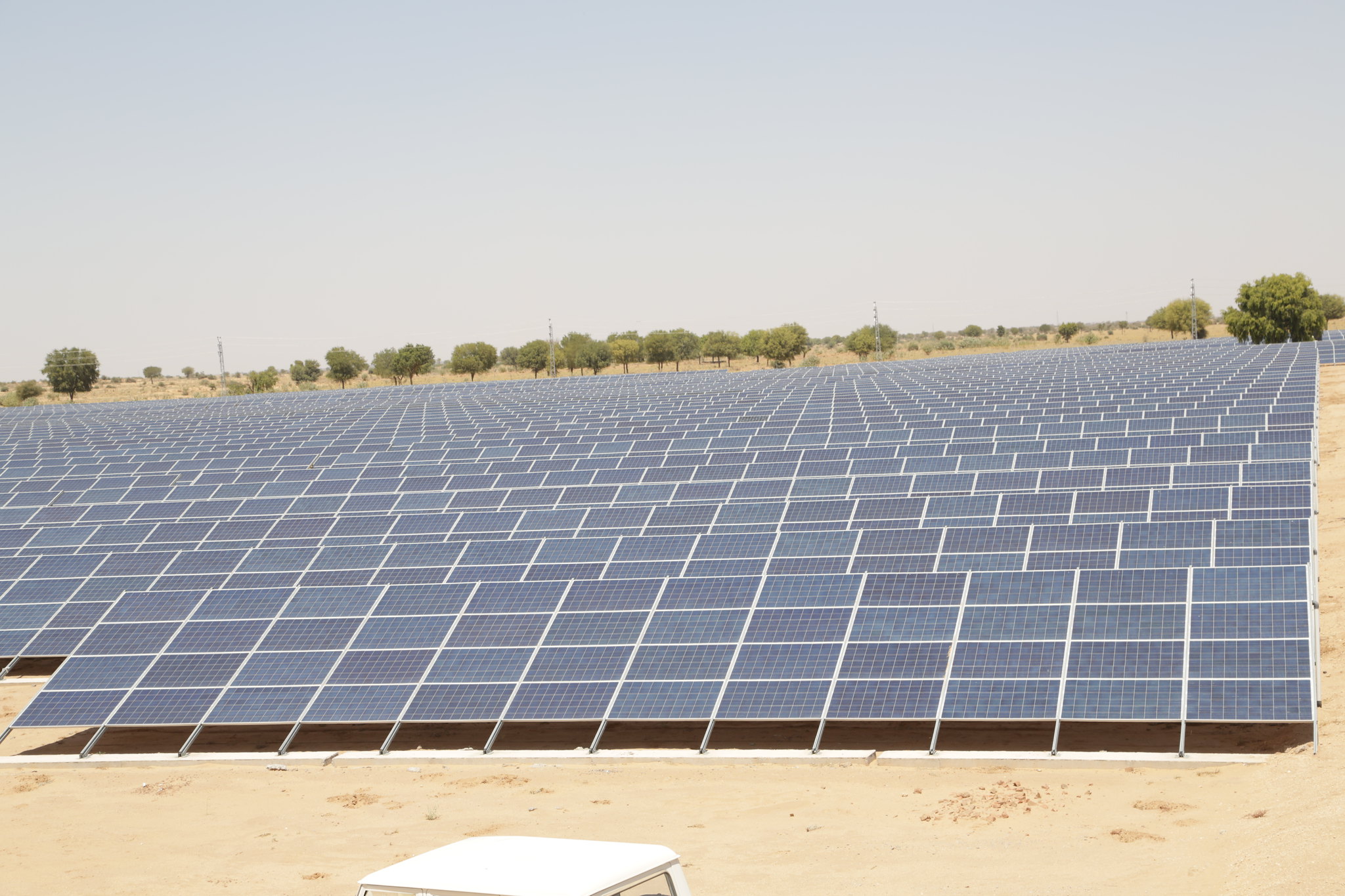India Could Pull Off a Green Energy Miracle
For the first time in history, India is investing more in solar energy than in coal and could soon catch up with the U.S. Solar panels in the desert of Rajasthan, India. (CIF Action / CC BY-NC-ND 2.0)
Solar panels in the desert of Rajasthan, India. (CIF Action / CC BY-NC-ND 2.0)
Solar energy is one of the fastest-growing energy sectors in the world, and has the great advantage of producing no carbon dioxide, a greenhouse gas that is raising the average surface temperature of the earth.
India is now for the first time in history investing more in solar energy than in coal.
There is a simple reason for this. Coal costs roughly 5 cents a kilowatt hour to generate electricity. India just let a bid for 1.2 gigawatts of solar energy and four companies scooped it up at 3.6 cents a kilowatt hour. The only advantage coal and gas had is that the sunk costs of plant construction have already been written off. But in India today, it is actually cheaper to build a new solar park than to go on operating a coal plant.
Over-all, India is now the lowest-cost producer of solar electricity, at about 8.5 cents a kilowatt hour. Solar photovoltaic has been declining annually by about 23% year on year since 2010.
Another 720 gigawatt bid was fulfilled by two companies for 3.86 cents a kilowatt hour.
Moreover, the solar panels, useful as they are for inexpensive energy production, also have other implications.
Indian farmers are hampered by the cost of powering irrigation. They typically depend on monsoon rains (which can turn to destructive floods), or they spend money that they cannot afford on water pumps fueled by diesel.
Solar to the rescue! The company Khethworks is introducing solar-powered irrigation pumps, which avoid the expense and carbon of diesel, and which could greatly increase India’s food supply.
India wants to put in 175 gigawatts of wind and solar energy by 2022, which would equal half of all India’s electricity consumption. New Delhi will likely fall somewhat short in these efforts, but may fulfill 75% of its goals, which itself would be highly impressive.
Asia hosts over 3 million photovoltaic power jobs, nearly 90% of the global total.
India has grown from 3 gigawatts of installed capacity in 2014 to over 30 GW in 2019!
India might not be able to triple that amount but it will at least double it to 60 gigawatts. From the beginning of time till now, the US has only put in 63 gigawatts of solar, total, and Japan has done 60. For India to catch up to those two countries (#2 and #3 for solar panels) in only two years will be almost a miracle.
Your support matters…Independent journalism is under threat and overshadowed by heavily funded mainstream media.
You can help level the playing field. Become a member.
Your tax-deductible contribution keeps us digging beneath the headlines to give you thought-provoking, investigative reporting and analysis that unearths what's really happening- without compromise.
Give today to support our courageous, independent journalists.








You need to be a supporter to comment.
There are currently no responses to this article.
Be the first to respond.